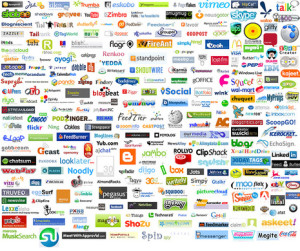 If you are reading this in your email or Reader today, click over and stop by the blog today. Something new and exciting is there.
If you are reading this in your email or Reader today, click over and stop by the blog today. Something new and exciting is there.
If you’re reading on the blog, surprise!
Thanks to Nick Harrison at Dashal and our fearless content director, Lindsay Bell-Wheeler, the site has a brand, spanking new design.
A few things to note:
- The big orange “Go Pro” button takes you to the monthly webinar or other content we have available.
- You can listen directly to the week’s Inside PR recording without having to leave the site or go into iTunes.
- Our #FollowFriday recommendations get to hang out in the sidebar for a week and you can follow them on Twitter directly from there.
- The navigation follows you as you scroll.
- The logo has been slightly modified to provide a space between Spin and Sucks because it drives me crazy when people write SpinSucks (which we realized is because there wasn’t a space in the logo).
- Lots of other fun stuff!
Check it out (test is on your phones and tablets, too) and let us know what you think!
Now on to your regularly scheduled programming.
How to Choose Social Media Tools
I’ve been reading a lot about how an organization should choose social media tools. There is some great advice – “be tool-agnostic” – and some terrible advice – “create a Twitter strategy,” but it all boils down to one thing: Are you driving people back to something you own?
By “own,” I mean your website or blog. Something you control. Something that won’t go away if the start-up darling gets bought or shutters or the founders get bored.
Something you can track, monitor, measure, and tweak strategies, content, and messages applicable to your audiences (not to the latest social network’s rules).
I like to think of it as a wheel (like we describe in Marketing in the Round): You have the website and/or blog in the center and the social networks and other ways of promoting your content are the spokes.
Once you figure out what kind of content is on your owned site(s), you can then begin to think about the tools you use.
Ask yourself the following questions:
- Where are our customers currently participating online? You can find out simply by asking them or by using tools such as Flip Top or Xobni.
- Where are our prospects currently participating online? Use a tool such as Traackr or Inky Bee to discover where the people you want to target are already participating.
- Which tool(s) can we focus on first?
- Can we prioritize our efforts?
- Where are our competitors spending their time?
- Can we do something new and different that gives us a perceived industry lead?
- Do we have experts internally who are willing to spend some time engaging with customers and prospects online?
I’m sure there are a gazillion more things to consider, but this will give you a good start. Where your customers and prospects are participating is where you should do the same.
Don’t get on Twitter just because everyone else is doing it. Do your competitors have Twitter pages? Were they abandoned? If so, they’ve already done the work for you … and know Twitter wasn’t a great use of their time.
Participate where your audiences are. That may mean you’re using a social network no one is talking about yet or it may mean you’re – gasp – using email. Whatever it is, your time is well spent because you’re not building the Field of Dreams and waiting for everyone to show up in Iowa.
Once you figure out the where, this infographic from Mark Smiciklas at Intersection Consulting will help you out with the how.
